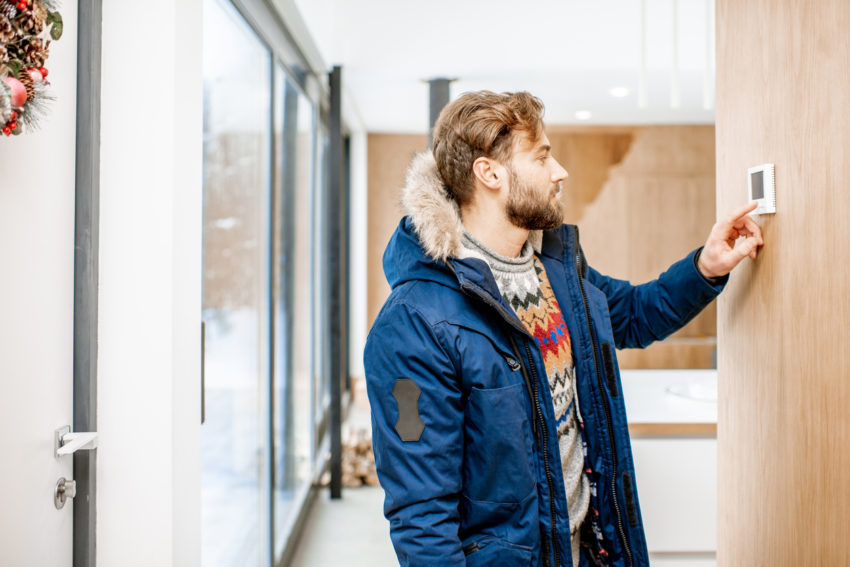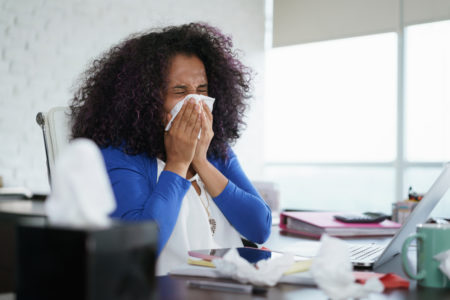
Share On Social!
Some people like to keep their indoor temperature at a balanced 70 degrees; others feel most contented when in colder or warmer rooms.
Either way, medical and construction experts know that thermal comfort can make significant impacts on health and energy use. Some internal bodily reactions, including mental function and eyesight, can react to the temperature that is present.
Thermal comfort is definitely not something to overlook, according to CDC’s National Institute for Occupational Safety and Health (NIOSH).
“The perception of thermal comfort is related to one’s metabolic heat production,” the agency states. “Heat transfer from the body to the environment is influenced by factors such as temperature, humidity, air movement, personal activities, and clothing.”
Thermal Discomfort and Its Effects
Not only can the temperature of homes, offices, and other public buildings influence the body as a whole, but it can impact its specific functions.
Researchers from Shanghai Jiao Tong University in Shanghai found that people undergoing temperature changes experienced numerous adverse reactions. 
“Human beings are often likely to expose themselves to sudden temperature change in daily life,” their study states. “For example, when entering/exiting an air-conditioned building from/to outdoors people may suffer not only thermal discomfort but also even some potential health problems.
“[Our] results show that perspiration, eyestrain, dizziness, accelerated respiration, and heart rate are sensitive self-reported symptoms in response to temperature step-changes.”
These changes occur due to the way the skin sends signals to the rest of the body given how cold or hot an area might be. Fluctuations in temperature, especially those that are sudden, can negatively impact people’s health without their realization of the root cause.
Thermal Discomfort and Who Is at Risk
Worse, thermal comfort can impact certain demographics more than others, including the elderly and children.
Latinos in these populations already face numerous obstacles, including facing trauma at an early age or a lack of proper care for diseases such as Alzheimer’s and dementia later in life.
In a statement from the University of Wollongong in New South Wales, Australia, medical experts illustrate potential harms older individuals face concerning indoor temperatures.
“Not only do perceptions of thermal comfort change as people age, indoor temperature has been cited as a key factor in comfort for older people, but indoor temperature also affects the wellbeing, health, and behavior of residents including the frequency and disruptiveness of agitation manifested by people living with dementia,” researchers state.
Moreover, thermal comfort can influence a student’s success in school, according to Architect’s Journal.
Issues of mold, dampness, unnecessary loss of heat, summer overheating, and poor air quality “can detrimentally effect the attention span, productivity and overall performance of both the learner and educator,” according to the report.
Solutions for Better Temperatures
Every aspect of building design plays off one another, according to The American Institute of Architects (AIA).
They encourage forward progress in creating thermal-comfort oriented designs in all spaces, including giving people more control over the temperature of the areas where the most time is spent.
AIA’s recommendations include: 
- “Focus on thermal symmetry to ensure that conditions are similar throughout the space and through an individual body.”
- “Giving individual occupants the ability to control their immediate environment will result in greater occupant satisfaction.”
- “Address all six factors of thermal comfort: air temperature, humidity, mean radiant environment, metabolic rate, air movement, and clothing.”
As Latinos and all Americans move toward a society that is increasingly reliant on manufacturing, it is important to remember that years of evolution have built the body to function in sync with nature.
Thermal comfort is a big part of that evolution.
Editor’s Note: This is Part Two of a series on building for holistic health. Read Part One. This article is part of a collaboration between Salud America! and the Hoffman Toxicant-Induced Loss of Tolerance (TILT) program at UT Health- San Antonio. To find out if you are TILTed due to exposure to everyday foods, chemicals, or drugs, take a self-assessment or learn more about TILT.
By The Numbers
1
Quick Survey
Can help you find out how chemically sensitive you are



